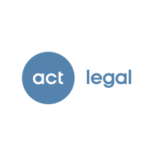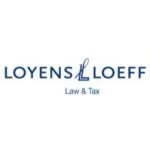-
What is the environmental framework and the key pieces of environmental legislation in your jurisdiction?
Portugal has a comprehensive body of legislation governing environmental law.
Firstly, the Portuguese Constitution affirms that everyone has a right to a healthy, balanced, and ecologically sustainable environment, as well as the obligation to protect it. It further delineates responsibilities for the State to fulfill through its agencies, with citizen involvement and participation.
Subsequently, the Law establishing the foundations of environmental policy seeks to implement environmental rights by promoting sustainable development. This is achieved through the effective management of the environment, with a particular focus on ecosystems and natural resources.
Relevant to the environmental theme, is the Law establishing the foundations of climate policy in Portugal, recognizing, among other things, the climate emergency situation and setting the objective for the Portuguese State to achieve carbon neutrality by 2050.
In addition to these foundational frameworks, the following should be noted:
- Environmental Impact Assessment Regime – which transposes to Portuguese Law Directive 2011/92/EU;
- Strategic Environmental Assessment Regime – which transposes to Portuguese Law Directive 2001/42/EC and Directive 2003/35/EC;
- Industrial Emissions Regime applicable to the Prevention and Integrated Control of Pollution – which transposes to Portuguese Law Directive 2010/75/EU;
- Regime for the Prevention and Control of Pollutant Emissions into the Air – which transposes to Portuguese Law Directive (EU) 2015/2193;
- Legal Regime for the European Union Emissions Trading Scheme – which transposes to Portuguese Law Directive (EU) 2018/410;
- Law that establishes the Voluntary Carbon Market and sets the rules for its operation;
- Legal Regime for the Prevention of major-accident hazards involving dangerous substances, and the limitation of their consequences for human health and the environment – which transposes Directive 2012/18/EU;
- Law that establishes the General Waste Management Regime, the Legal Regime for Landfill Waste Disposal, and amends the Regime for the Management of Specific Waste Streams, transposing Directives (EU) 2018/849, 2018/850, 2018/851, and 2018/852 to Portuguese Law;
- Law on Water Resources– which transposes to Portuguese Law Directive 2000/60/EC (Water Framework Directive);
- Legal Regime for the Use and Licensing of Use of Water Resources;
- Legal Regime for the Production of Water for Reuse, Obtained from the Treatment of Wastewater, and Its Use;
- Legal Regime for the Conservation of Nature and Biodiversity;
- Legal Regime for the Natura 2000 Network – which revises the transposition to Portuguese Law of Directives 79/409/EEC and 92/43/EEC.
-
Who are the primary environmental regulatory authorities in your jurisdiction? To what extent do they enforce environmental requirements?
The primary environmental regulatory authorities in Portuguese jurisdiction include those operating at national and regional levels.
The Ministry for the Environment and Energy plays a pivotal role at the national level. Its mission includes formulating, directing, implementing, and evaluating environmental and climate policies in accordance to Article 25(1) of the Organic Law of the XXIV Constitutional Government.
The Minister for the Environment oversees key entities including the Portuguese Environment Agency (APA), a central authority with nationwide jurisdiction. According to Article 3(1) of the APA´s Organic Law, its mission is to propose, develop, and monitor the environmental and sustainable development policies, in coordination with other policy areas.
Equally important is the Institute for Nature Conservation, Biodiversity and Forests (ICNF), whose mission is to propose and implement integrated land use planning and management policies in the areas of nature conservation, biodiversity, and forestry.
Also significant is the General Inspection of Agriculture, Sea, Environment, and Spatial Planning, which oversees the performance and management of entities under the Ministry of Environment. It conducts audits, inspections, and control actions, and is authorized to initiate, investigate, and adjudicate environmental administrative offense cases under the framework law on environmental offenses, as stated in Article 2 of Decree-Law No. 23/2012, which establishes its organic structure.
At the regional level, the Coordination and Regional Development Commissions (CCDR) play a key role. These include CCDR Norte, CCDR Centro, CCDR Lisboa e Vale do Tejo, CCDR Alentejo, and CCDR Algarve. Their mission, as defined in Article 3 Decree-Law No. 36/2023, of May 26 (as amended), includes: developing and implementing regional development strategies; integrating and coordinating public policies essential to regional development in the environmental field; managing cohesion policy through regional and European territorial cooperation programs; and supporting local authorities and their associations.
-
What is the framework for the environmental permitting regime in your jurisdiction?
Environmental licensing is governed by various independent legal instruments, depending on the project type, the nature of the activity, and the natural resources impacted. A single project may require multiple procedures and permits from different authorities, each assessing the project within their respective areas of jurisdiction.
In 2015, to simplify and standardize legal regimes, the Single Environmental Licensing (Licenciamento Único Ambiental, LUA) was introduced.
Through a single application on the electronic platform SiliAmb (Integrated Environmental Licensing System), it triggers a series of environmental procedures and results in the issuance of a Single Environmental Title (Título Único Ambiental, TUA). The TUA consolidates the various permissive acts (licenses, authorizations) resulting from these procedures. It serves as a declaration summarizing the conditions applicable to the facilities, activities, and/or projects involved, in accordance with the integrated environmental procedures and prior control requirements under LUA.
These include regimes such as Environmental Impact Assessment, Assessment of Environmental Incidences (renewable energy power plants), Industrial Emissions, Integrated Pollution Prevention and Control (Incineration and Co-incineration of waste, establishments and/or activities using organic solvents), Air Emissions, European Emissions Trading System, Waste Management, Management of Mineral Deposit Waste and Mining Operations, Prevention of Major Accidents involving Dangerous Substances, Water Resource Use Titles, Wastewater Treatment for Reuse, Waste Disposal Operations in Landfills, and the licensing of the installation and operation of Integrated Centers for the Recovery, Valorization, and Disposal of Hazardous Waste (CIRVER).
The LUA interacts with various applicable legal regimes, including the Responsible Industry System (Sistema de Indústria Responsável, SIR), the Livestock Activity Regulation (Regulamento da Atividade Pecuária, REAP), and the Exercise of Production, Transport, Distribution, and Marketing of Energy Activities.
In 2023, measures were introduced to reform and simplify environmental licensing procedures (Simplex Ambiental). These changes led to the elimination of licenses, authorizations, acts, and procedures, self-monitoring by economic operators, and the creation of a mechanism for certifying tacit approvals and prior communication with a time limit, in the absence of a response from the competent authority.
-
Can environmental permits be transferred between entities in your jurisdiction? If so, what is the process for transferring?
Environmental licenses for projects may be transferred to a new entity, in cases of ownership changes, along with other assets. Generally, prior consent, notification, or communication with the competent licensing authority is required. The new holder assumes the same conditions and obligations as the previous one. The transfer must be endorsed on the original license identifying the new holder.
-
What rights of appeal are there against regulators with regards to decisions to grant environmental permits?
The right to appeal decisions made by regulatory authorities regarding environmental licenses generally follows the same procedures as those for administrative acts.
According to national administrative law, administrative acts can be challenged before administrative authorities and administrative courts. A challenge before the administrative courts does not require prior administrative appeal.
To ensure the effectiveness of decisions, administrative law provides the possibility of appeal through interim measures. Judicial decisions may order the case to be sent back to the administrative authority, requiring it to issue a license or authorization, or to reconsider and reassess the decision.
The Portuguese legal system, through Law No. 83/95, of August 31, established, in addition to administrative action, the right to popular action. This provides judicial protection for certain common interests of the community and can be used as a means of appealing decisions related to environmental licenses.
-
Are environmental impact assessments (EIAs) for certain projects required in your jurisdiction? If so, what are the main elements of EIAs (including any considerations in relation to biodiversity or GHG emissions) and to what extent can EIAs be challenged?
The legal regime for Environmental Impact Assessment (EIA) has undergone several amendments and is currently regulated by Decree-Law No. 151-B/2013 of October 31, as amended by Decree-Law No. 11/2023 of February 10. This regime, which is increasingly, important in practice, complies with Directive 2011/92/EU of the European Parliament and of the Council, of December 13, 2011 (amended by Directive 2014/52/EU of the European Parliament and of the Council, of April 16, 2014).
EIA is an administrative sub-procedure within an authorizing process that assesses the potential significant (positive and negative) effects of a project within its spatial context. This includes ecological factors, social factors and cultural heritage. As a preventive environmental policy tool, its objective is to evaluate the environmental impact of projects, balancing public interest in the environment with economic and scientific development in decision-making.
It is a complex administrative procedure that must be completed before the licensing or authorization of projects likely to have significant environmental effects. As required by law, it involves the mandatory issuance of a favorable or conditionally favorable Environmental Impact Declaration (DIA) for project to be licensed or authorized.
The law specifies which projects are automatically subject to an EIA and also allows for case-by-case analysis. In this process, the licensing authority may refer projects with significant potential environmental impact, based on their location, size, or nature, for an EIA.
The Simplex Ambiental initiative, designed to simplify, clarify, and expedite administrative procedures, introduced changes to the EIA legal regime. These changes reduce its scope, both mandatory and case-by-case, particularly for renewable energy production projects.
In the EIA procedure, environmental factors are assessed, with relevant environmental authorities and other competent bodies providing technical opinions. Based on these, a final technical opinion, the Environmental Impact Declaration (DIA), is issued. The DIA must be issued within a set time frame, after which it is considered tacitly approved if no decision is made.
The EIA procedures and their corresponding decisions are made public and subject to a public consultation period. These decisions can be challenged both administratively and judicially, and prior recourse to administrative authorities is not required before challenging them in the Administrative Courts.
-
What is the framework for determining and allocating liability for contamination of soil and groundwater in your jurisdiction, and what are the applicable regulatory regimes?
Portugal lacks specific regulations for soil contamination prevention and remediation. In 2015, a draft legislative project (ProSolos) was presented to establish a legal framework for soil contamination, but it has not yet been approved.
As a result, soil-related issues are addressed in a fragmented and incomplete manner through the following:
- The Legal Framework for Liability for Environmental Damage (RJRDA) holds economic operators responsible for preventing and repairing environmental damage caused by activities listed in Annex III, regardless of fault. For activities not listed, operators are responsible only if they acted with intent or negligence. Remediation of soil damage, to eliminate significant risks to human health, requires operators to take measures to eliminate, control, contain, or reduce contaminants, considering the land’s current use or its approved future use at the time of damage assessment.
- The General Waste Management Regime (RGGR), while subsidiary, specifically addresses soil decontamination and environmental liabilities. It requires licensing for soil remediation and decontamination operations. Waste Management Plans may include contaminated sites and measures for their rehabilitation. In cases of activity cessation, where authorization from the licensing authority is required, the request must include a soil assessment. If environmental liability is found, the cessation may be subject to conditions or measures to minimize and correct negative environmental impacts.
- The Industrial Emissions Regime (REI) addresses the potential for soil pollution at the installation site. It requires operators to prepare a baseline report detailing the soil’s contamination status, enabling comparison before and after activity cessation. A decommissioning plan must be created, outlining measures to prevent pollution and restore the site to environmentally acceptable conditions, suitable for future use. Upon the final cessation of activities, operators must take measures to remove, control, contain, or reduce hazardous substances, considering the site’s current and future use.
- The Legal Framework for Environmental Impact Assessment (RJAIA) and the Legal Framework for Environmental Offenses (LQCOA) impose remediation obligations in the context of administrative offenses.
- In some municipalities, urban projects involving soil or subsoil intervention must consider potential contamination during project preparation, licensing, and execution. If soil contamination is confirmed, a license for soil remediation, as outlined in point (ii), is required.
-
Under what circumstances is there a positive obligation to investigate land for potential soil and groundwater contamination? Is there a positive obligation to provide any investigative reports to regulatory authorities?
According to some Municipal Master Plans (PDM), operators planning urban projects on land and/or underground must assess soil quality and create a sampling plan if contamination is suspected, before licensing or prior communication. They must then conduct a risk analysis to determine the need for remediation.
Outside the scope of the PDM and the regimes mentioned, there is no obligation to assess soil condition or submit reports. to the regulatory authorities.
-
If land is found to be contaminated, or pollutants are discovered to be migrating to neighbouring land, is there a duty to report this contamination to relevant authorities?
Under the RJRDA, in cases of environmental damage to the soil, economic operators must promptly notify the competent authority of the damage or the imminent threat of damage and keep the information updated.
-
Does the owner of land that is affected by historical contamination have a private right of action against a previous owner of the land when that previous owner caused the contamination?
Under the general civil liability regime in the Civil Code, the owner of contaminated land may seek recourse against previous owners if they caused the pollution or contamination.
-
What are the key laws and controls governing the regulatory regime for waste in your jurisdiction?
The waste regulatory framework sets measures to protect the environment and human health by reducing waste production and its negative impacts. It supports the transition to a circular economy and long-term competitiveness. The key legal regimes include:
- The General Waste Management Regime (RGGR) covers the prevention, production, and management of waste, including its transfer. It establishes planning and prevention instruments, transportation rules, and licensing requirements for waste management activities such as treatment, recovery, recycling, and disposal.
- The Legal Regime for the Management of Specific Waste Streams (UNILEX), based on the Extended Producer Responsibility Principle, regulates the management of packaging waste, used oils, tires, electrical and electronic waste, batteries and accumulators, and end-of-life vehicles.
- The Legal Regime for Waste Landfilling establishes the general requirements for the design, construction, operation, closure, and post-closure of landfills, including specific technical standards for each landfill class.
- The Legal Regime for the Installation and Operation of Integrated Centers for the Recovery, Valorization, and Disposal of Hazardous Waste (CIRVER) regulates specialized centers for the treatment of hazardous waste.
The primary regulatory control tool for waste management is the Integrated Waste Registration System (SIRER). This information system enables the registration, submission, and storage of data related to waste generation and management, as governed by the SIRER Operating Regulation. The RGGR mandates registration in SIRER and the reporting of data.
-
Do producers of waste retain any liabilities in respect of the waste after having transferred it to another person for treatment or disposal off-site (e.g. if the other person goes bankrupt or does not properly handle or dispose of the waste)?
Under the RGGR, the responsibility of the waste producer or holder ends upon transfer to a waste treatment operator, an entity managing specific waste stream systems, or a municipal or intermunicipal system for waste collection and/or treatment.
-
To what extent do producers of certain products (e.g. packaging/electronic devices) have obligations regarding the take-back of waste?
Under UNILEX, which governs the management of specific waste streams under Extended Producer Responsibility, all stakeholders in the product lifecycle—ranging from design, manufacture, distribution, and commercialization to use—share joint responsibility for managing the waste once it is discarded. They must contribute, based on their respective roles and responsibilities, to the operation of waste management systems. These systems can be individual, where the producer is solely responsible for waste management, or integrated, where the producer transfers responsibility to a licensed managing entity, which assumes collective responsibility for the waste.
Specifically, for packaging and packaging waste, producers and/or packagers are required to establish a reuse system to recover all packaging placed on the market. In this context, a deposit system for reusable beverage containers has been established and regulated.
-
What are the duties of owners/occupiers of premises in relation to asbestos, or other deleterious materials, found on their land and in their buildings?
Law no. 63/2018 establishes a framework to manage and mitigate risks associated with asbestos-containing materials in company buildings, installations, and equipment.
The objective of the Legislation is to prohibit the placing on the market and use of dangerous substances, including products with asbestos fibers in construction or renovation projects for private buildings, installations, and equipment and to establish procedures and objectives for the removal of asbestos-containing products still present in company properties.
The Authority for Working Conditions (ACT) is responsible for developing a plan to:
- Identify companies whose buildings, installations, and equipment contain asbestos.
- Pinpoint companies with potential risks based on premises and equipment usage.
- Follow the best applicable practices in identifying and addressing risks.
The conditions for the plan’s implementation are to be approved by government officials overseeing labour, economy, and health sectors.
The Government is tasked with monitoring the plan’s implementation.
There is no general obligation to investigate asbestos: Private entities are not universally required to inspect their premises for asbestos or to remove it unless specific risks are identified.
Obligations during construction or demolition: Owners and contractors must ensure safe disposal of asbestos-containing materials in accordance with waste and hazardous materials regulations. This compliance can lead to significant additional costs.
Employers and Property Owners must comply with restrictions on the use of asbestos in new construction or renovations and need to adhere to safe disposal practices during construction or demolition activities.
Government and ACT are responsible for the creation, approval, and oversight of the asbestos risk identification plan.
Contractors and Construction Professionals: must integrate safe disposal measures in project planning to avoid non-compliance with waste and hazardous materials laws.
This legislation reflects a structured approach to managing asbestos risks, emphasizing safety and regulatory compliance, particularly during construction and demolition, while targeting identified high-risk companies for monitoring and action.
-
To what extent are product regulations (e.g. REACH, CLP, TSCA and equivalent regimes) applicable in your jurisdiction? Provide a short, high-level summary of the relevant provisions.
The Regulation (EC) no 1907/2006 of the European Parliament and of the Council of 18 December 2006, concerning the registration, evaluation, authorization and restriction of chemicals (reach), establishing a European Chemicals Agency (ECHA), is directly applicable in Portugal, and it´s the implementation in the national legal order is assured by Decree-Law no. 293/2009, of 13 October, which designates the APA (Portuguese Environment Agency) as the competent authority in the field of environment; the Directorate-General for Health in the field of human health; and the Directorate-General for Economic Activities in the field of competitiveness and innovation, particularly regarding the socio-economic impact. Reach also established the ECHA, a central entity responsible for managing the technical, scientific, and administrative aspects of the regulation. According to ECHA, REACH is a EU regulation adopted to improve the protection of human health and the environment from risks posed by chemicals while also enhancing the competitiveness of the EU chemical industry. it also promotes alternative methods for assessing the hazards of substances, aiming to reduce the number of tests on animals. In principle, REACH regulation applies to all chemical substances, not only those used in industrial processes but also those present in our daily lives, such as in cleaning products, paints, and articles like clothing, furniture, and electrical appliances. therefore, the regulation has an impact on most companies in the EU.
Regulation (EC) no 1272/2008 of the European Parliament and of the Council, of 16 December 2008, on the classification, labeling, and packaging of substances and mixtures, is also directly applicable in Portugal, and its implementation is ensured by Decree-Law no. 220/2012, of 10 October, which designates the same competent authorities as those for REACH. CLP regulation applies to the substances and mixtures regardless of the quantities placed on the EU market, imposing obligations throughout the entire supply chain, namely on manufacturers of substances, importers of substances or mixtures, downstream users (formulators of mixtures), distributors and retailers, and producers and importers of certain specific articles.
In Portugal, Regulation (EU) 2019/1021 of the European Parliament and of the Council of 20 June, on persistent organic pollutants (POPS) is also in force, with its implementation ensured in the national legal framework by Decree-Law no. 75/2022, of 31 October, and APA is the competent authority responsible for its application.
Given the properties of POPS —persistent, bioaccumulative, and toxic— and considering their potential for long-range transport and the associated risks to human health and the environment, pops are a global concern. they are identified and regulated globally through the Stockholm Convention and the Aarhus Protocol, which are implemented in the EU via the POP regulation, which is applicable to pure substances, those present in mixtures or articles, and imposes a set of measures and obligations on those responsible for placing such substances on the market, their release into air, water, or soil, the storage of accumulated materials, and the production or management of waste. These measures include the prohibition, elimination, or restriction, in a gradual and expeditious manner, of the manufacture, placing on the market, and use of pops, ensuring the safe management of accumulated materials containing pops subject to restrictions, minimization or elimination, wherever possible, of unintentional releases of pops, along with their monitoring, and ensuring the appropriate management of waste containing or contaminated by POPS.
-
What provisions are there in your jurisdiction concerning energy efficiency (e.g. energy efficiency auditing requirements) in your jurisdiction?
According to the Directorate-General for Energy and Geology (DGEG) in “Energia em Números 2024”, Portugal reduced its energy intensity by 3.8% in 2022, ranking 14th in the EU for lowest energy intensity. However, energy dependence on foreign sources stood at 71.2%, above the EU average, with a target of 65% by 2030 (DGEG, 2024). Renewable energy accounted for 34.7% of gross final energy consumption in 2022 and 61% of electricity generation, placing Portugal 6th in the EU for renewables (DGEG, 2024). These achievements highlight Portugal’s ongoing commitment to energy efficiency and sustainability, as outlined in its National Energy and Climate Plan (PNEC, 2030). This commitment is supported by various legal provisions, such as:
- Energy Performance
Buildings significantly impact the environment through the extraction and processing of construction materials, as well as the energy required for thermal comfort and indoor air quality. Recognizing the urgency of addressing these effects, the EU has established a coordinated regulatory framework to reduce reliance on fossil energy in buildings.
The core of this effort is the Energy Performance of Buildings Directive (EPBD), which is updated in Directive (EU) 2018/844 and Directive (EU) 2019/944. In Portugal, these directives were transposed into national law via Decree-Law No. 101-D/2020, dated December 7. The transposition of Directive (EU) 2024/1275 is still underway.
Portugal has also outperformed the EU average in improving household energy efficiency, with 30% of homes receiving energy-saving interventions between 2018 and 2023, compared to the EU average of 25% (Eurostat, 2023).
Additionally, Decree-Law No. 84/2024, dated November 4, introduced energy efficiency measures for data centers, further promoting sustainability in the innovation and technology sectors.
- Near Zero Energy Buildings (nZEB)
The EPBD requires all new buildings, from 2021, to meet the near Zero Energy Buildings (nZEB) standard. In Portugal, the criteria for nZEBs differ for residential and commercial buildings but all must achieve high energy performance using mainly renewable energy. These criteria are outlined in Manual SCE (Order No. 6476-E/2021, July 1).
Directive 2010/31/EU introduced nZEB, and Portugal transposed it into national law through Ordinance No. 42/2019 (April 2), which sets requirements for building systems, and Ordinance No. 98/2019 (January 30), which defines methods for calculating energy efficiency.
- Long-Term Renovation Strategy (ELPRE)
Directive (EU) 2018/844 requires Member States to create a Long-Term Renovation Strategy (ELPRE), aiming to transform the building stock into nZEBs by 2050, improving energy efficiency and sustainability.
Portugal’s national policies aim to: i. Reduce energy demand in buildings by improving insulation and system efficiency; ii. Promote renewable energy sources, replacing fossil fuels.
- Encourage energy flexibility
Fostering the adoption of innovative solutions such as energy communities.
These measures reflect Portugal’s commitment to environmental sustainability and the energy transition, ensuring that building construction and operation align with global environmental responsibilities.
-
What are the key policies, principles, targets, and laws relating to the reduction of greenhouse gas emissions (e.g. emissions trading schemes) and the increase of the use of renewable energy (such as wind power) in your jurisdiction?
The Climate Basis Law (LBC) is a comprehensive law that impacts multiple sectors and sets the groundwork for climate policy. Its primary goal is to achieve carbon neutrality by 2050.
Key aspects include:
- Sectoral aspects: Defines policy tools for various sectors (transport, consumer materials, agri-food chain, carbon sequestration) with particular focus on the energy sector (prohibits fossil fuel use for electricity; promotes electricity generation from renewable sources; encourages decentralised production and energy efficiency and highlights the sea as a key area for renewable energy);
- Economic operators are encouraged to contribute towards achieving carbon neutrality goals by incorporating climate change considerations into their decision-making processes.
This requires companies to conduct climate risk analysis, which includes assessing their exposure to climate change and evaluating the carbon impact of their activities and operations for each financial year. This analysis should be integrated into management reports, and companies should define carbon budgets with a maximum total limit for greenhouse gas (GHG) emissions.
Furthermore, both public and private economic and financial agents must account for climate risk and impact. Failure to do so will result in a breach of their fiduciary duties in the medium to long term. Additionally, the law provides for the establishment of a certification system for the ecological or carbon footprint of goods and services.
- Creation of Climate Policy Instruments: Climate policy instruments are developed across various natures, functions, and specific scopes, categorized into planning and evaluation at both national and local levels. These include the definition of GHG reduction targets, carbon budgets, PNEC, sectoral plans, ENA AC, and Municipal and Regional Climate Action Plans.
Additionally, economic, financial, and sectoral climate policies encompass: Allocation of budget for climate policy within a state budget account; implementation of the Green IRS; Carbon taxes; Sustainable financing principles guiding financial management; Approval and implementation of decarbonisation programs.
- Climate rights and duties: Citizens’ Right to Climate Balance:
Citizens have the right to protect themselves from the impacts of climate change and demand that public and private entities fulfill their duties and obligations regarding climate matters. This includes:
- The right to promote prevention, cessation, and repair of risks to climate balance.
- The right to request immediate cessation of activities threatening or damaging the climate balance, along with procedural prerogatives;
- Citizens must protect, preserve, respect, and ensure the safeguarding of the climate balance.
- Contribute to mitigating climate change.
- Participate in drafting and reviewing climate policy instruments.
- Liability and sanctioning framework: This framework establishes that harmful actions and omissions that accelerate or contribute to climate change will incur liability. It also provides for the definition, in a separate law, of an administrative offence regime to serve as both a deterrent and sanctioning instrument for actions and omissions that harm the climate. This includes practices that violate legal and regulatory climate provisions and the improper or abusive use of natural resources.
- Creation of the Council for Climate Action: The Council for Climate Action is a specialized body focused on climate matters with advisory functions. Its key roles include providing opinions on the State Budget and issuing recommendations on the decarbonization of the economy in various contexts.
Alongside the LBC, key climate policy instruments include the National Strategy for Adaptation to Climate Change (ENA AC) 2020, the Roadmap to Carbon Neutrality 2050 (RNC), the National Energy and Climate Plan (PNEC), and the Programme for Adaptation to Climate Change (P-3AC).
-
Does your jurisdiction have an overarching “net zero” or low-carbon target and, if so, what legal measures have been implemented in order to achieve this target.
RNC 2050 and PNEC 2030:
The RNC 2050 outlines a sustained path towards achieving carbon neutrality by 2050, establishing key guidelines and incorporating the decarbonization of the electricity generation system, along with the need for profound changes in energy use.
The PNEC 2030 is a crucial instrument for national energy and climate policy, setting targets and objectives for greenhouse gas emissions, renewable energy, energy efficiency, and electricity interconnections. It is fully aligned with the RNC 2050 and the European Union’s integrated planning cycle for energy and emissions.
The foundational measures for climate policy are primarily those outlined in the LBC and described in the previous sections. Although these measures have yet to be fully implemented, the creation and operationalization of the Voluntary Carbon Market is a notable development.
-
Are companies under any obligations in your jurisdiction to have in place and/or publish a climate transition plan? If so, what are the requirements for such plans?
The Corporate Sustainability Reporting Directive (CSRD) came into effect on January 5, 2023, aiming to ensure that companies provide reliable, comparable, and relevant environmental and social sustainability information. This enables stakeholders and consumers to assess the non-financial performance of businesses more effectively. By offering this information, the objective is to provide clarity, aiding potential investors and consumers in accurately assessing the sustainability performance of European Union companies, as well as understanding the potential impacts and risks related to their businesses. However, the Directive has not yet been transposed into Portuguese law.
Relevant National Legislation:
- Climate Bases Law (Law No. 98/2021): Article 26, paragraph 1, requires the government to present an annual report to the Portuguese Parliament on policies and measures regarding greenhouse gases, progress in national greenhouse gas emissions from sources and removals through sinks, and actions for adapting to climate change.
- Decree-Law No. 89/2017, of July 28: Regulates the disclosure of non-financial information and diversity information by large companies and groups, transposing Directive 2014/95/EU.
As mentioned previously, the Climate Bases Law (LBC) calls on economic operators to achieve carbon neutrality goals by adopting specific corporate governance measures. However, beyond the scope outlined, there is no obligation to draw up detailed plans.
-
To what extent does your jurisdiction regulate the ability for products or companies to be referred to as “green”, “sustainable” or similar terms? Who are the regulators in relation to greenwashing allegations?
Environmental Claims and Greenwashing:
The growing environmental awareness among economic agents and consumers has led to changes in consumption dynamics and communication through environmental or ecological claims. However, EU directives regulating the communication framework for environmental claims have not yet been transposed into Portuguese law. As a result, greenwashing is addressed under existing legal regimes governing advertising, consumer protection, and unfair commercial practices.
Legal Framework:
- Advertising must be legal, clearly labelled, and truthful, respecting consumers’ rights.
- False environmental claims are considered unfair and misleading commercial practices that create unjust competitive advantages.
- A misleading commercial practice includes any false information or information that is likely to mislead the average consumer, even if factually accurate.
- Omission of substantial information necessary for the average consumer to make an informed purchasing decision is also deemed misleading.
Role of Direção-Geral do Consumidor (DGC): The DGC, responsible for defining and enforcing consumer protection and overseeing advertising activities in Portugal, published a report on greenwashing practices. This report includes:
- An explanatory guide on commercial practices for companies aligning their brands with sustainability, particularly concerning environmental claims;
- A checklist for consumers to assess the compliance of environmental claims with international advertising standards.
Code of Conduct on Advertising Self-Regulation: The Code includes a section on Environmental Claims (Section E), which provides a framework to guide economic operators in the use of environmental claims in advertising.
The Direção-Geral do Consumidor (DGC), the public body responsible for defining and enforcing consumer protection and overseeing advertising activities in Portugal, published a report on greenwashing practices. The report includes an explanatory guide on the commercial practices of companies wishing to align their brands with sustainability, particularly concerning environmental claims. It also provides consumers with a checklist to help assess the compliance of environmental claims with international advertising standards.
The Code of Conduct on Advertising Self-Regulation includes a section on Environmental Claims (Section E), which sets out a framework to guide economic operators in the use of environmental claims in advertising.
-
Are there any specific arrangements in relation to anti-trust matters and climate change issues?
The Portuguese Competition Authority and the courts adhere to the European Commission’s Guidelines when evaluating agreements and concerted practices. It is anticipated that this approach will also be applied to the Commission’s new Guidelines on horizontal co-operation agreements, which include a specific chapter focused on assessing agreements between competitors that aim to promote sustainability objectives.
-
Have there been any notable court judgments in relation to climate change litigation over the past three years?
Over the past three years, Portuguese courts have not ruled on the substance of disputes related to climate change.
-
In light of the commitments of your jurisdiction that have been made (whether at international treaty meetings or more generally), do you expect there to be substantial legislative change or reform in the relation to climate change in the near future?
Reforms, changes, and new regulatory frameworks are anticipated in order to fulfil the Fit for 55 initiative arising from the European Green Deal and to fully implement the climate policy measures outlined in the LBC.
-
To what extent can the following persons be held liable for breaches of environmental law and/or pollution caused by a company: (a) the company itself; (b) the shareholders of the company; (c) the directors of the company; (d) a parent company; (e) entities (e.g. banks) that have lent money to the company; and (f) any other entities? Transactions
If a company breaches environmental legislation or causes pollution, it can be held liable primarily under two laws: the Legal Regime for Environmental Liability and the Environmental Administrative Offences Framework Law.
The Legal Regime of Environmental Liability applies to:
- Environmental damage or threats of such damage (objective);
- Caused as a result of the exercise of any activity carried out within the scope of an economic activity, regardless of its public or private nature, whether for profit or not (subjective)
According to this law, when the harmful activity is attributable to a company, the obligations to prevent and repair environmental damage apply jointly and severally to the respective principals, managers, or directors. This rule provides strong protection as it foresees joint liability, without any further condition, such as the specific contribution of each individual to the harmful act.
If the operator is a company within a group or under a control relationship, environmental liability extends to the parent company or the controlling company in cases of abusive use of legal personality or fraud against the law.
The aforementioned obligations apply to damage caused by environmental harm resulting from diffuse pollution, provided a causal link can be established between the damage and the harmful activities.
Financing entities and other entities may be held liable if they meet the criteria mentioned above.
As for environmental administrative offences, directors, managers, and others who perform, even if only in practice, administrative functions in companies, even if irregularly constituted, and any other equivalent entities, may, under certain circumstances, be jointly and severally liable for the payment of the fine.
Regarding environmental administrative offences, if the offender is a legal person (e.g., a company) or an equivalent entity, partners, directors, or managers shall be jointly and severally liable for the payment of the fine along with the entity.
-
To what extent can: (a) a buyer assume any pre-acquisition environmental liabilities in an asset sale/share sale; and (b) a seller retain any environmental liabilities after an asset sale/share sale in your jurisdiction?
In addition to the criteria above mentioned, it is also important to consider time-related requirements.
Under the Environmental Administrative Offences Framework Law, liability for environmental offences is generally determined at the time the environmental damage is caused.
In a share sale, the partners, directors, or managers of the acquiring company will not be held personally liable for damage caused prior to the sale. However, anyone exercising management functions at the company, even if only de facto, is subsidiarily liable for fines related to previous events when the final decision imposing the fines is notified during their management period and the failure to pay is attributable to them.
In an asset sale, liability for administrative offences remains with the seller.
Under the Legal Regime for Environmental Liability, in a share sale, the buyer may indirectly assume liability for environmental damage if the acquired legal entity is responsible for causing the damage. In an asset sale, liability for environmental damage is attributed to the entity responsible for causing the damage. This means that the buyer will not be held liable for damage caused prior to the sale.
In both share and asset transactions, the contractual allocation of liability plays a crucial role. Specific indemnities or guarantee clauses in the sale and purchase agreement can help address these risks.
-
What duties to disclose environmental information does a seller have in a transaction? Is environmental due diligence commonplace in your jurisdiction?
In the Portuguese jurisdiction, conducting environmental due diligence is commonplace. However, there is no specific legal requirement for a seller in a transaction to disclose environmental information. Instead, this obligation is governed by the general principles of contract law.
-
What environmental risks can be covered by insurance in your jurisdiction, and what types of environmental insurance policy are commonly available? Is environmental insurance regularly obtained in practice?
The Environmental Liability Regime encompasses provisions regarding environmental liability and damages, ensuring the accountability of operators for their activities’ environmental impact.
In certain cases, subscribe an environmental insurance is legally mandated, depending on the nature and risks associated with the activities undertaken.
To mitigate the risks associated with facility operations, operators are required to establish financial guarantees that are adequate, independent, and may function as alternatives or complements to one another. These guarantees must ensure the ability to assume environmental liability arising from the activities carried out. Operators may fulfill this requirement through the following mechanisms:
- Insurance Policies – Subscribing to insurance policies covering environmental risks.
- Bank Guarantees – Securing guarantees issued by financial institutions.
- Environmental Funds – Participating in designated environmental funds.
- Reserve Funds – Establishing specific reserve funds allocated exclusively for this purpose.
In Portugal, insurance policies covering environmental damage to soil, surface water, and groundwater are widely available, and, in practice, these policies are typically based on standard insurance agreements, and commonly obtained.
-
To what extent are there public registers of environmental information kept by public authorities in your jurisdiction? If so, what is the process by which parties can access this information?
LADA regulates access to administrative documents, administrative and environmental information, as well as the reuse of administrative documents.
According to its provisions, public authorities are required to collect, organize, and actively disseminate environmental information within the scope of their responsibilities.
This information should preferably be made available through online databases. Public authorities must ensure the semi-annual update and dissemination of environmental information, including texts of treaties, conventions, or international agreements, as well as national and European legislation related to the environment; policies, plans, and programs concerning environmental matters; reports on the implementation of environmental policies and the state of the environment; data or summaries of data resulting from monitoring activities that have or may have an environmental impact; licenses, authorizations, and environmental agreements, or references to where such information can be accessed; and environmental impact studies and risk assessments, or references to where this information can be obtained.
Specifically, regarding environmental information, entities are required to make available to the public, free of charge, lists identifying all bodies and entities that hold environmental information. Preferably, this should be centralized on a single website that aggregates the respective locations where the information is accessible, along with the identity of the person responsible for granting access. Entities must also establish and maintain suitable facilities for consulting environmental information, providing support to the public in exercising their right of access. They are required to adopt procedures that ensure the standardization of environmental information, thereby guaranteeing that the information provided is accurate, up-to-date, and comparable. When providing environmental information, entities must indicate where information about the measurement procedures used to collect the data can be found and obtained, when available. This includes details on the methods of analysis, sampling, and preliminary treatment of samples, or references to the standardized procedures employed in collecting the information.
Access to administrative documents must be formally requested in writing through a formal application process. Public authorities are required to assist applicants in identifying the documents and data they require, provide guidance on the organization and use of their archives and records, and publish on their websites the necessary information regarding the form, means, location, and hours for submitting a request for access.
-
To what extent is there a requirement on public bodies in your jurisdiction to disclose environmental information to parties that request it?
All individuals, without the need to demonstrate any specific interest, have the right to access administrative documents, encompassing the rights to consult, reproduce, and be informed of their existence and content. LADA previews this right and reflects fundamental principles of Administrative Law, such as equality, proportionality, justice, impartiality, and collaboration with private individuals.
Entities to which a request for access to administrative documents is directed must, within 10 days, communicate the date, location, and method for consultation or issue the requested certificate. In the event of refusal, they must provide a written explanation detailing the reasons for the total or partial denial of access, as well as the remedies available to the applicant, including the possibility of lodging a complaint with the Commission for Access to Administrative Documents (CADA) or initiating judicial proceedings to compel the requested entity. If the requested document or information is not in the possession of the entity, the entity must inform the applicant accordingly.
Entities are not obliged to fulfill requests that are manifestly abusive due to their repetitive or systematic nature or the volume of documents requested. Nevertheless, applicants retain the right to file a complaint if their request is denied on these grounds.
With respect to requests for access to environmental information, the request may be refused if the administrative document is not, or should not be, in the possession of the entity to which the request is directed. In such cases, if the entity is aware that the information is held by another body, it must immediately forward the request to the appropriate body and inform the applicant of this action.
When a request concerns information contained in internal communications between entities or involves access to nominative documents, approval should only be granted if the public interest in disclosing the information outweighs the reasons for confidentiality. In all cases, requests for information related to environmental emissions must be granted.
Furthermore, a request may be denied if the disclosure of the requested information would harm: i) The confidentiality of the process or information, where such confidentiality is provided for by law, including banking secrecy, statistical secrecy, or fiscal confidentiality; ii) International relations, public security, or national defense; iii) Judicial secrecy, confidentiality in administrative, disciplinary, financial, or administrative offense proceedings as provided by law, or access to justice and its proper functioning; iv) The confidentiality of commercial or industrial information, where such confidentiality is legally provided to protect a legitimate economic interest, as well as public interests in statistical, fiscal, or banking secrecy; v) Copyrights, related rights, or industrial property rights; vi) The interests or protection of individuals who voluntarily provided the information without any legal obligation to do so, unless they have authorized its disclosure; vii) Environmental protection, including the location of protected species.
-
Are entities in your jurisdictions subject to mandatory greenhouse gas public reporting requirements?
The European Green Deal has set the ambitious target of making the European Union climate-neutral by 2050. As part of this commitment, greenhouse gas emissions are to be reduced by 45% to 55% by 2030 compared to levels recorded in 2005.
In support of this vision, the Climate Framework Law outlines key climate policy objectives, including establishing a sustainable and irreversible path for reducing greenhouse gas emissions. It requires organizations to annually assess the economic, environmental, and social impacts of their activities, as well as their vulnerability to climate change. These assessments must be included in their management reports and may involve defining a carbon budget, setting a total cap on greenhouse gas emissions consistent with the law’s targets.
The law also emphasizes the need for decarbonization in the agricultural sector, advocating for policies that improve livestock feeding practices and adopt comprehensive approaches to animal husbandry. These measures should incorporate technologies that effectively reduce greenhouse gas emissions.
Currently, large public-interest entities with over 500 employees are obligated to disclose specific Environmental, Social, and Governance (ESG) metrics, including data on their greenhouse gas emissions. Similarly, businesses operating under the EU Emissions Trading System (EUETS) must secure permits for greenhouse gas emissions, monitor and certify these emissions on an annual basis, and report the results to the Portuguese Environmental Agency.
The Corporate Sustainability Reporting Directive (CSRD) extends the range of businesses required to report on sustainability matters, particularly greenhouse gas emissions. Under the directive, companies must disclose significant impacts, risks, and opportunities tied to their operations, including emissions data for Scopes 1, 2, and 3, as well as total greenhouse gas emissions.
-
Have there been any significant updates in environmental law in your jurisdiction in the past three years? Are there any material proposals for significant updates or reforms in the near future?
Recently, Portugal has seen significant changes in environmental law, such as the aforementioned “Simplex Ambiental,” the name given to a law approved in 2023 that introduces measures to reduce costs and simplify administrative procedures for businesses. To this end, licenses, authorizations, acts, and procedures considered unnecessary or redundant in relation to the protection of environmental resources have been eliminated, simplifying business activities without compromising environmental protection
At the beginning of 2024, came into force a law that established the Voluntary Carbon Market (VCM), which promotes projects for the reduction and sequestration of greenhouse gas emissions. The VCM has growing importance in decarbonization policies and is directly related to various national and international commitments to combat climate change. It is a complementary instrument to other regulated measures and has the potential to mobilize additional efforts from companies, individuals, and sectors for decarbonization. It provides a mechanism for voluntary compensation of emissions that cannot be completely eliminated, especially in hard-to-decarbonize sectors (e.g., the transport sector); it fosters the development of innovative solutions, such as carbon capture and storage projects and new technologies for emission reduction; and it encourages private sector participation in climate mitigation.
At the end of 2024, a law came into effect that introduced significant changes to the Legal Regime for the European Union Emissions Trading Scheme (EUETS) – transposing Directive (EU) 2023/959. Some of the main changes include the introduction of a new emission reduction target for 2030, of 62% less compared to 2005, for the sectors covered by the EUETS; a sharper reduction in the number of emission allowances at the European Union level through two absolute Cap reductions, in 2024 and 2026, and an increase in the linear reduction factor, which will be 4.3% between 2024 and 2027 and 4.4% from 2028 onwards; and a revision of the scope of the EUETS, so that its regime is directly applicable to activities and not to the emissions associated with those activities.
In the near future, the completion of the National Nature Restoration Plan is expected, following Regulation (EU) 2024/1991 of the European Parliament and of the Council on nature restoration. This regulation sets out a series of targets and measures aimed at the recovery of degraded habitats and the fight against biodiversity loss in Europe. The regulation requires Member States to implement restoration measures with the goal of covering, collectively, at least 20% of terrestrial areas and at least 20% of marine areas by 2030, and by 2050, all ecosystems in need of restoration. Each Member State must prepare a national restoration plan and conduct preparatory research to identify the necessary measures to meet the targets and obligations. These plans must be submitted to the European Commission by August 18, 2026.
Portugal: Environment
This country-specific Q&A provides an overview of Environment laws and regulations applicable in Portugal.
-
What is the environmental framework and the key pieces of environmental legislation in your jurisdiction?
-
Who are the primary environmental regulatory authorities in your jurisdiction? To what extent do they enforce environmental requirements?
-
What is the framework for the environmental permitting regime in your jurisdiction?
-
Can environmental permits be transferred between entities in your jurisdiction? If so, what is the process for transferring?
-
What rights of appeal are there against regulators with regards to decisions to grant environmental permits?
-
Are environmental impact assessments (EIAs) for certain projects required in your jurisdiction? If so, what are the main elements of EIAs (including any considerations in relation to biodiversity or GHG emissions) and to what extent can EIAs be challenged?
-
What is the framework for determining and allocating liability for contamination of soil and groundwater in your jurisdiction, and what are the applicable regulatory regimes?
-
Under what circumstances is there a positive obligation to investigate land for potential soil and groundwater contamination? Is there a positive obligation to provide any investigative reports to regulatory authorities?
-
If land is found to be contaminated, or pollutants are discovered to be migrating to neighbouring land, is there a duty to report this contamination to relevant authorities?
-
Does the owner of land that is affected by historical contamination have a private right of action against a previous owner of the land when that previous owner caused the contamination?
-
What are the key laws and controls governing the regulatory regime for waste in your jurisdiction?
-
Do producers of waste retain any liabilities in respect of the waste after having transferred it to another person for treatment or disposal off-site (e.g. if the other person goes bankrupt or does not properly handle or dispose of the waste)?
-
To what extent do producers of certain products (e.g. packaging/electronic devices) have obligations regarding the take-back of waste?
-
What are the duties of owners/occupiers of premises in relation to asbestos, or other deleterious materials, found on their land and in their buildings?
-
To what extent are product regulations (e.g. REACH, CLP, TSCA and equivalent regimes) applicable in your jurisdiction? Provide a short, high-level summary of the relevant provisions.
-
What provisions are there in your jurisdiction concerning energy efficiency (e.g. energy efficiency auditing requirements) in your jurisdiction?
-
What are the key policies, principles, targets, and laws relating to the reduction of greenhouse gas emissions (e.g. emissions trading schemes) and the increase of the use of renewable energy (such as wind power) in your jurisdiction?
-
Does your jurisdiction have an overarching “net zero” or low-carbon target and, if so, what legal measures have been implemented in order to achieve this target.
-
Are companies under any obligations in your jurisdiction to have in place and/or publish a climate transition plan? If so, what are the requirements for such plans?
-
To what extent does your jurisdiction regulate the ability for products or companies to be referred to as “green”, “sustainable” or similar terms? Who are the regulators in relation to greenwashing allegations?
-
Are there any specific arrangements in relation to anti-trust matters and climate change issues?
-
Have there been any notable court judgments in relation to climate change litigation over the past three years?
-
In light of the commitments of your jurisdiction that have been made (whether at international treaty meetings or more generally), do you expect there to be substantial legislative change or reform in the relation to climate change in the near future?
-
To what extent can the following persons be held liable for breaches of environmental law and/or pollution caused by a company: (a) the company itself; (b) the shareholders of the company; (c) the directors of the company; (d) a parent company; (e) entities (e.g. banks) that have lent money to the company; and (f) any other entities? Transactions
-
To what extent can: (a) a buyer assume any pre-acquisition environmental liabilities in an asset sale/share sale; and (b) a seller retain any environmental liabilities after an asset sale/share sale in your jurisdiction?
-
What duties to disclose environmental information does a seller have in a transaction? Is environmental due diligence commonplace in your jurisdiction?
-
What environmental risks can be covered by insurance in your jurisdiction, and what types of environmental insurance policy are commonly available? Is environmental insurance regularly obtained in practice?
-
To what extent are there public registers of environmental information kept by public authorities in your jurisdiction? If so, what is the process by which parties can access this information?
-
To what extent is there a requirement on public bodies in your jurisdiction to disclose environmental information to parties that request it?
-
Are entities in your jurisdictions subject to mandatory greenhouse gas public reporting requirements?
-
Have there been any significant updates in environmental law in your jurisdiction in the past three years? Are there any material proposals for significant updates or reforms in the near future?
















